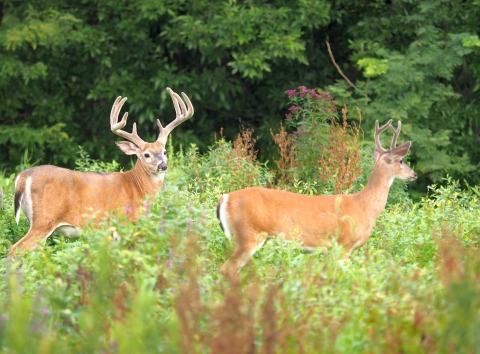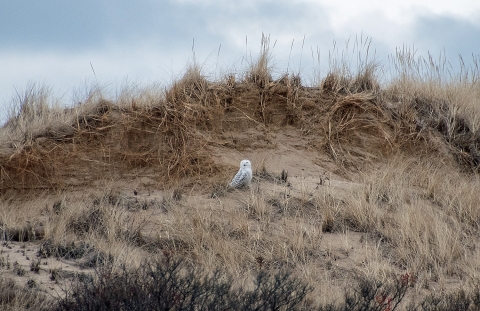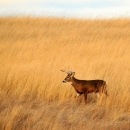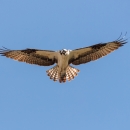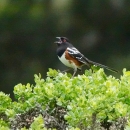Seasons of Wildlife
Spring
Spring is time for new growth and new beginnings! Amphibian species emerge from their winter retreats and move to their breeding sites, where loud breeding calls from wood frogs, spring peppers and fowlers toads can be heard. Early pops of color are displayed by spring ephemerals like Canada mayflower. Flocks of migrant bird species make their arrival, such as turkey vultures, eastern phoebes, American woodcock, and osprey. Many species’ newborns like curious coyote pups and feisty fox kits are out exploring their new world at this time.
Summer
Summer is a bustling time for all species. The fields and meadows become an assortment of lush grasses and bright wildflowers, creating prefect habitat for many species, including New England cottontail rabbits and pollinators like monarch butterflies. Many waterfowl species like mallards, black ducks and mute swans spend their time forging and raising their offspring in the wetlands. Reptiles are taking advantage of the summer sun and basking on rocks and logs like spotted turtles or Massachusetts threatened diamondback terrapins. North American river otters are playful splashing around with their families and catching fish.
Fall
Autumn is the calm after the hectic humid summer season. Migratory birds like great blue herons, wood thrushes, and broad-winded hawks leave for warmer wintering grounds. Many owls, like the barred owl are more vocally active in fall because both adults and the new juveniles are looking for and defending hunting areas. Animals of all sizes from grey squirrels to eastern turkeys are starting fill their stomachs with fruit, acorns and seeds. White-tailed deer activity becomes high because the breeding season, known as “the rut” is during November.
Winter
Winter is the quietest time of the year, yet wildlife is still all around us. Many songbirds stick around in colder elements like ever-so-bright northern cardinal and dark eye juncos. Some animals like weasels change their fur color to white to camouflage in the snow. Snowy owls migrate down from the Artic overwinter in new England, especially on the coastal areas, including Cape Cod. Even though we can’t see them, we have many hibernators such as groundhogs, insects, reptiles, amphibians, and bats.
Featured Species
Through unique partnerships, the refuge protects and enhances biological diversity, restores native habitats, protects water quality and supports species of conservation concern. This protection enhances habitats to aid species populations, such as migratory birds, raptors, waterfowl and wading birds, songbirds, threatened New England cottontail, various turtle species, and many aquatic species, such as American eel, striped bass, mollusk and crustacean species.

